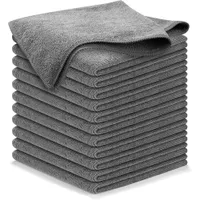How to clean brass with household ingredients – 5 expert-approved methods
These simple household ingredients can easily restore your brass to its original glory.

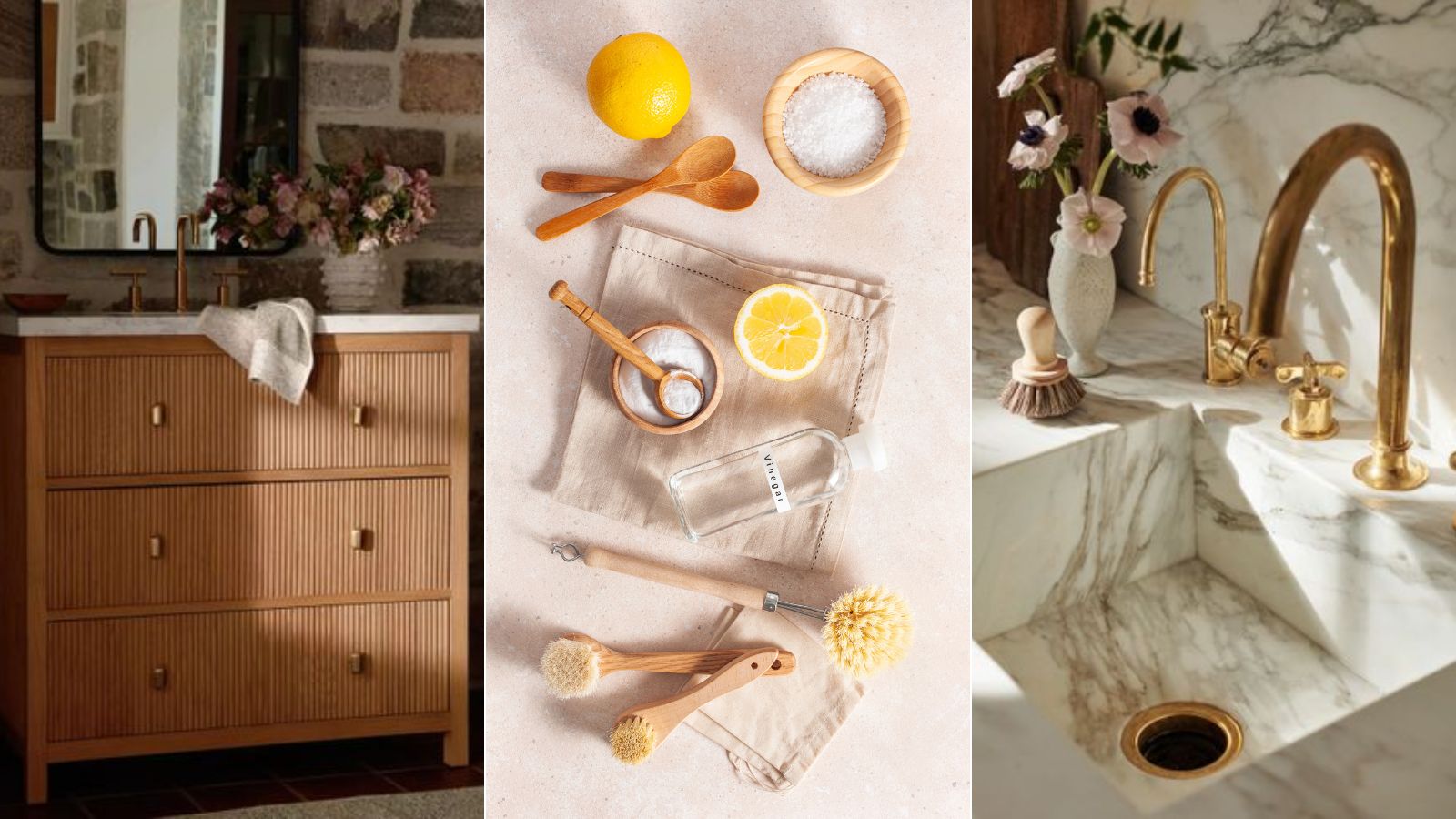
There's no point in letting your brass lose its shine over time. An accumulation of mineral build-up, water marks, and even the beginning of rust can slowly diminish your brass's appeal. However, using five simple household ingredients, you can easily restore your brass to its original glory.
How better to ensure you always have convenient access to brass cleaning equipment than using items already in your home? From commonly used techniques, like cleaning with vinegar or cleaning with baking soda, to lesser-known household cleaning ingredients, such as ketchup, these expert-recommended cleaning tips can be incorporated into your brass care routine.
Not only do these ingredients ensure your brass looks as good as new, but they also align with sustainable living practices – it's a testament to how we can leverage simple household items to maintain a beautiful home.
How to clean brass with household ingredients
'Brass is a material that tarnishes easily, but when you’re cleaning brass items, it’s very important to avoid using harsh chemicals or abrasive materials because they can scratch or corrode the brass surface,' explains Petya Holevich, domestic cleaning expert and supervisor at Fantastic Services.
'That’s why cleaning brass with natural, household ingredients is an effective and gentle method for this type of metal surface.'
Below are a few different methods that work wonders:
1. Vinegar and salt method
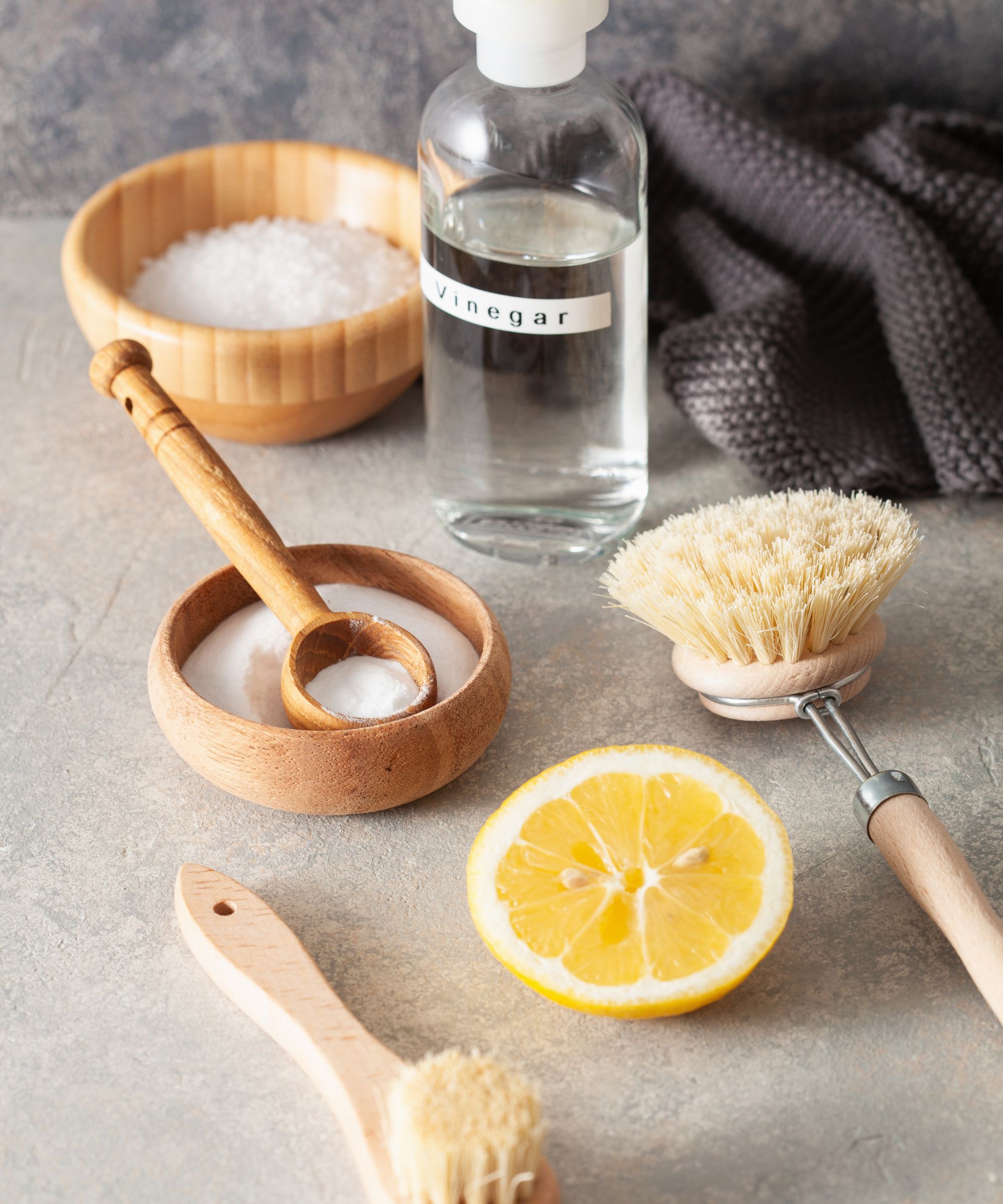
1. Mix equal parts white vinegar and water in a bowl. Then, combine enough salt to form a paste.
Design expertise in your inbox – from inspiring decorating ideas and beautiful celebrity homes to practical gardening advice and shopping round-ups.
2. 'Gently apply this paste to the brass surface, allowing it to sit for a few minutes to loosen dirt and tarnish,' advises Vanessa Bossart, cleaning expert and owner of Sparkling Cleaning Pro.
3. 'Then, using a soft cloth, buff the brass in circular motions to reveal its natural shine.'
4. Rinse the brass with warm water to remove the vinegar solution and salt residue.
5. Be sure to dry the brass properly with a clean cloth to prevent water spots from undermining your cleaning efforts.
USANOOKS Microfiber Cleaning Cloth 12-pack
Was $13.99, now $9.99 from Amazon
Use these soft microfiber clothes to dry and buff your brass items and reveal their shine.
2. Olive oil and vinegar method
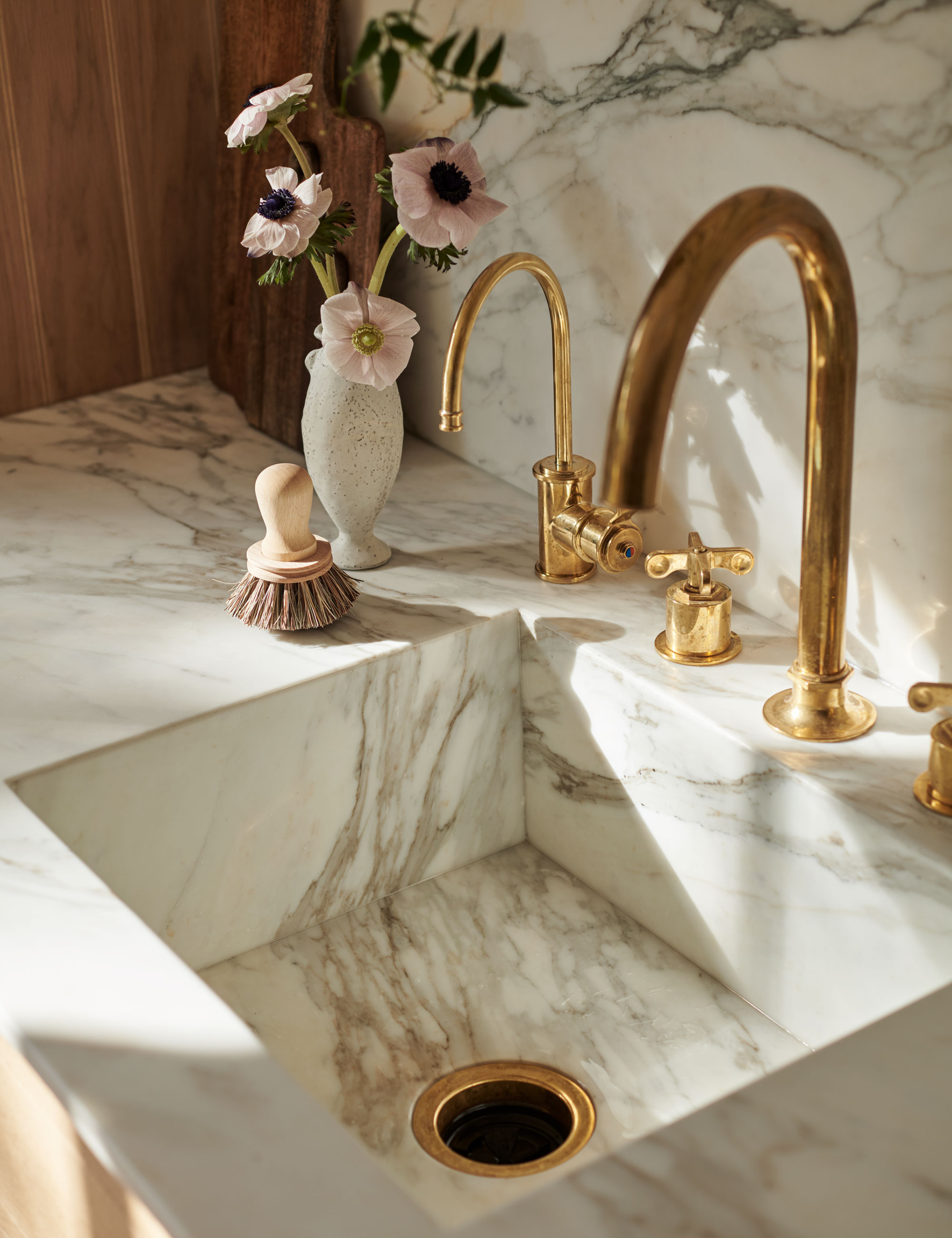
1. 'Apply a small amount of olive oil to a soft cloth, then dampen another cloth with white vinegar,' says Karina Toner, operations manager at Spekless Cleaning.
2. 'Rub the brass surface with the olive oil-soaked cloth to polish and restore shine.
3. 'Use the vinegar-dampened cloth to remove excess oil and any remaining residue.'
After cleaning, a dab of olive oil can also be applied to protect brass items from future tarnishing. It creates a protective layer, extending the time between cleanings while adding a glossy sheen.

Karina is the Operations Manager at Spekless Cleaning, a trusted maid service based in Washington D.C. The team has over five years of experience providing top-quality cleaning services for both residential and commercial clients. Karina oversees every aspect of the business, ensuring that every client gets the same top-notch service and a spotless clean every time.
3. Lemon and baking soda method

For tougher stains, a lemon juice and baking soda paste can work wonders. The moderate abrasiveness of baking soda will gently remove any existing tarnish, while the acidity of lemon juice will prevent your brass from turning green.
1. Combine one teaspoon of baking soda and one teaspoon of lemon juice and stir until a paste forms.
2. 'Using a cloth or sponge, gently rub the mixture into the brass surface, coating the entire item with the mixture.
3. Let the paste sit for a few minutes – 10 should do the trick – then scrub the brass with a soft-bristled brush or cloth.
4. 'Once cleaned, rinse the brass thoroughly with warm water to remove the cleaning solution,' advises Karina Toner.
5. 'Dry the brass with a clean, soft cloth to prevent water spots.'
If you want to cut out some of the middle steps, Rocky Vuong, Founder and Director of Calibre Cleaning, suggests: 'Cut a lemon in half, dip it in salt, and scrub the brass. This method is super simple and it smells great!'
JSCARLIFE Deep Scrub Cleaning Brush
Was $10.99, now $9.99 at Amazon
You can use a soft-bristled brush such as this to clean and buff brass items.
4. Ketchup, tomato sauce, or tomato paste

It sounds strange, but tomato-based products – such as ketchup, tomato paste, or sauce – work wonders on tarnished brass. This is because tomatoes have acidic properties that help remove tarnish from brass and other metals.
1. 'Squeeze some of your chosen tomatoey product onto a clean cloth and rub it over the brass item. Leave it on for up to an hour if the tarnish is very bad,' advises Petya Holevich.
2. Then, wash it away with dish soap and warm water.
3. Dry it with a microfiber cloth to prevent streaks.
5. Toothpaste
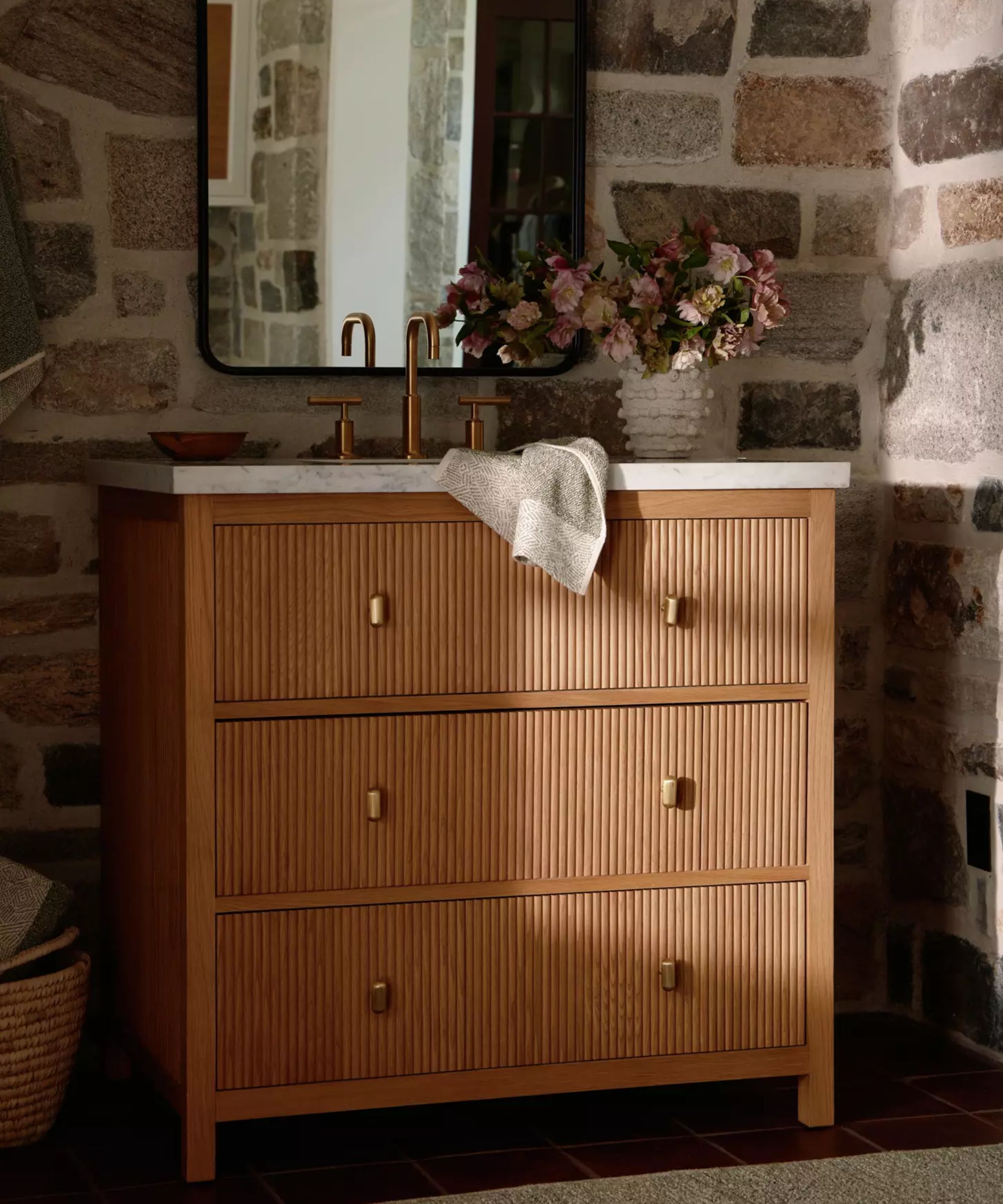
Brass is one of the surprising things you can clean with toothpaste, which is due to its mild abrasive properties, making it the perfect tool for achieving a flawless shine without damaging the metal.
1. Apply a thin coating of toothpaste on the brass using an old toothbrush, then let it sit for about ten minutes.
2. Lightly scrub any tarnished or dirty areas with a moist sponge or towel.
3. Thoroughly rinse the brass product with warm water and dry.
Additional tips

Polishing: 'This step is optional, but if you want, you can further polish the brass with a soft, dry cloth to restore its shine,' recommends Petya Holevich. 'When you do that, be very gentle to avoid scratching the surface.
Protective coating: 'To prevent future tarnishing, consider applying a thin layer of natural wax or oil, such as beeswax or olive oil, to the cleaned surface. This will help create a barrier against moisture and oxidation.' You can use this Ezsmith Wicket Wax from Amazon.
Double check it's made of brass: It’s also important to note that before cleaning an item, you’ll need to determine if it’s made of brass or if it’s brass-plated,' adds Petya Holevich. 'To do that, hold a magnet to the item; if it sticks, it means the item isn’t made of brass, and it’s brass-plated. In this case, proceed with cleaning it using only water and mild cleaning detergent because anything more abrasive can damage the plating.
'Also, if your brass item has a glossy, lacquered finish, it most likely only needs scrubbing and isn’t tarnished because this coating protects it from tarnish. You can do that by only using water and soap or a damp cloth to remove the dust.'
For small brass objects that can be soaked, one final, surprising household cleaner is Coca-Cola. Carbonated drinks can contain acids such as phosphoric acid, citric acid, and carbonic acid, which can help break down stains, rust, and buildup of dirt, leaving the brass looking like new.

Lola Houlton is a news writer for Homes & Gardens. She has been writing content for Future PLC for the past six years, in particular Homes & Gardens, Real Homes and GardeningEtc. She writes on a broad range of subjects, including practical household advice, recipe articles, and product reviews, working closely with experts in their fields to cover everything from heating to home organization through to house plants. Lola is a graduate, who completed her degree in Psychology at the University of Sussex. She has also spent some time working at the BBC.
